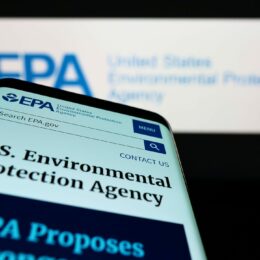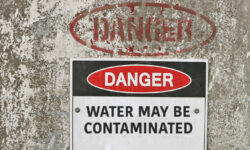Biden Administration Announces Changes to PFAS Regulation in Tap Water

The “forever chemicals” that have been turning up in drinking water throughout the country will soon be the target of new regulations from the Environmental Protection Agency.
Per- and polyfluoroalkyl substances (PFAS), a group of chemicals common in non-stick coating, fire retardants, and other waterproof materials, may soon be regulated as a group rather than as individual chemicals in drinking water. This announcement comes just as a study published in the journal Hypertension revealed that PFAS causes high blood pressure in women — along with other potentially serious health consequences including thyroid diseases and testicular and kidney cancers.
Currently, a few “forever chemicals” are already regulated by the EPA, including PFOS and PFOA. However, many other PFAS chemicals have been identified in water supplies, including GenX (the chemical, not the generation) and PFBS. These individual chemicals were not previously regulated.
Under the EPA’s latest decision, PFOS and PFOA will have even lower “near-zero” limits in tap water at just 0.02 parts per trillion for PFOS and 0.004 parts per trillion for PFOA, down from 70 parts per trillion previously. GenX and PFBS are finally also being regulated at 10 parts per trillion and 2,000 parts per trillion, respectively.
The EPA also announced plans to begin regulating all PFAS under one umbrella, rather than targeting each individual type as they are spotted. There are roughly 4,700 different PFAS chemicals.
But even when these chemicals are regulated, it doesn’t mean much is being done to keep them out of your tap water. The current regulation only sets a threshold at which a health advisory is issued to the public warning them that PFAS are in the water. The EPA is looking to change that, however, no enforceable limit has been put in place.
PFAS was given the nickname “forever chemicals” because they don’t break down in the environment – or in your drinking water. There are filtration methods that can be used to purify water. The International Bottled Water Association, for example, has a set threshold well below the EPA’s previous regulation.
But the American Chemistry Council warned that any enforceable limits on PFAS may be premature. Despite the threat PFAS poses to the drinking water supply, most municipal water treatment facilities lack the filtration equipment needed to drastically lower PFAS levels.
“EPA has announced new Advisories that are 3,000 to 17,000 times lower than those released by the Obama Administration in 2016,” the group said in a statement. “These new levels cannot be achieved with existing treatment technology and, in fact, are below levels that can be reliably detected using existing EPA methods.”
Studies have shown upwards of 98 percent of Americans have PFAS in their bloodstreams. To learn more about PFAS, read our explainer here.





